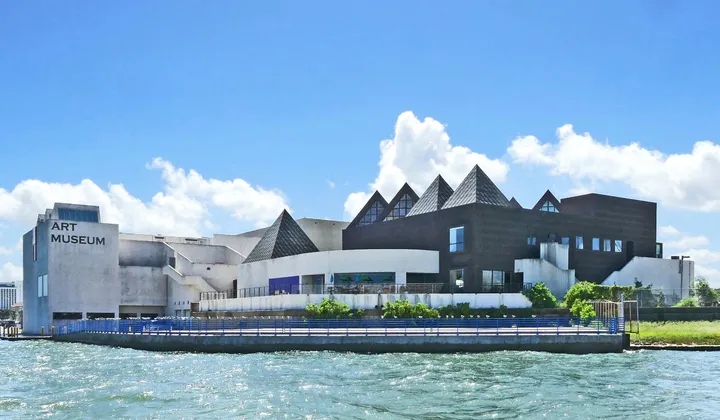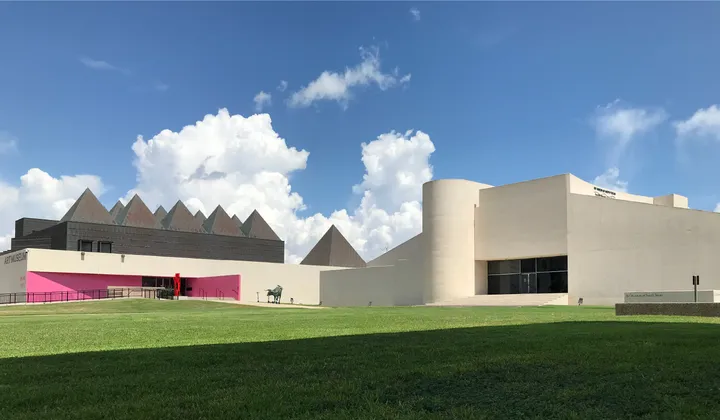Art Museum of South Texas
1902 North Shoreline Boulevard, Corpus Christi, TX 78401 - United States
Nowhere is our blend of cultures more present than in the architecture of the museum itself. Originally designed by American architect, Philip Johnson in 1972, the Art Museum of South Texas has stood as a landmark on the edge of Corpus Christi Bay. The three-level facility was constructed of poured white concrete and shell aggregate creating a natural relationship with the environment. The windows give way to sweeping views of the bay making them works of art in their own right. In 2006, an expansion lead by Mexican architect, Ricardo Legorreta doubled the size of the space features 13 roof-top pyramids as well as stunning use of color and light.
A beautiful marriage of their unique perspectives, the two buildings come together as one incredible masterpiece proudly representing Mexican and American culturesThe Mission of the South Texas Institute for the Arts (the Institute), doing business as the Art Museum of South Texas, is to operate educational facilities and an art museum which advance the awareness, knowledge, appreciation and enjoyment of the visual arts for residents and visitors of South Texas.
To meet its educational mission, the Institute will present a variety of programs which include classes, lectures, films, performances and other activities which inspire community interest in the visual arts. These programs will be offered at the Art Museum of South Texas, the Antonio E. Garcia Arts and Education Center, and other outreach venues that serve the Institute’s mission.
In operating an art museum, the Institute will actively collect, conserve, exhibit, research and interpret outstanding works of visual art with interest in art of the Americas and of the region.
Exhibits
"Art in Black and White: Selections from the Collection" Artists make decisions to create art from a range of values and tones when they choose to employ black and white. Within this range is a wide swath of possibilities. As young students of art, one is often asked as they are developing their skills to create value ranges from the darkest dark, which might be a way that the student of art making describes a void, or a place without detail or a place of no light emanating. Within these select works artists have created a variety of results using value shifts, textures, patterns, shapes and hard and soft edges and surfaces. What this exhibition reminds the viewer is that black and white can be expressive, animated, stark, expansive, luminous, minimal, descriptive, joyful, and dramatic. Placing a limitation on an artist may often yield the most expressive potential in the result.
Dr. Clotilde P. Garcia Spanish Colonial Gallery
The Art Museum of South Texas (AMST) opened its first permanent exhibition, The Dr. Clotilde “Dr. Cleo” P. Garcia Spanish Colonial Gallery, on May 22nd, 2016 showcasing many Spanish Colonial, pre-Columbian, and contemporary works inspired and influenced by artisans and artists of that time. With a generous contribution for the J.A. “Tony” Canales Family, AMST now has this valuable cultural resource which features works of art spanning the Pre-Columbian and the Spanish Colonial period in Central America, Mexico, and the Southwestern United States (which was known as New Spain), and Peru (which encompassed all of South America except for Brazil. The pieces within the exhibition reflect how the Spanish Colonial period was a time of conquest, change, and influence.
Permanently on view
Participation in Museum Day is open to any tax-exempt or governmental museum or cultural venue on a voluntary basis. Smithsonian magazine encourages museum visitation, but is not responsible for and does not endorse the content of the participating museums and cultural venues, and does not subsidize museums that participate.



